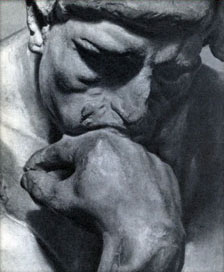Model theory a branch of mathematical logic that deals with the connection between a language and its interpretations or structures. Basic to it is the characterization of the conditions under which a sentence is true in structure. It is confusing that the term ‘model’ itself is used slightly differently: a model for a sentence is a structure for the language of the sentence in which it is true. Model theory was originally developed for explicitly constructed, formal languages, with the purpose of studying foundational questions of mathematics, but was later applied to the semantical analysis of empirical theories, a development initiated by the Dutch philosopher Evert Beth, and of natural languages, as in Montague grammar. More recently, in situation theory, we find a theory of semantics in which not the concept of truth in a structure, but that of information carried by a statement about a situation, is central.
The term ‘model theory’ came into use in the 1930s, with the work on first-order model theory by Tarski, but some of the most central results of the field date from before that time. The history of the field is complicated by the fact that in the 1910s and 1920s, when the first model-theoretic findings were obtained, the separation between first-order logic and its extensions was not yet completed. Thus, in 1915, there appeared an article by Leopold Löwenheim, containing the first version of what is now called the Löwenheim-Skolem theorem. Löwenheim proved that every satisfiable sentence has a countable model, but he did not yet work in firstorder logic as we now understand it. One of the first who did so was the Norwegian logician Thoralf Skolem, who showed in 1920 that a set of first-order sentences that has a model, has a countable model, one form of the Löwenheim- Skolem theorem. Skolem argued that logic was first-order logic and that first-order logic was the proper basis for metamathematical investigations, fully accepting the relativity of set-theoretic notions in first-order logic. Within philosophy this thesis is still dominant, but in the end it has not prevailed in mathematical logic. In 1930 Kurt Gödel solved an open problem of Hilbert-Ackermann and proved a completeness theorem for first-order logic. This immediately led to another important model-theoretic result, the compactness theorem: if every finite subset of a set of sentences has a model then the set has a model. A good source for information about the model theory of first-order logic, or classical model theory, is still Model Theory by C. C. Chang and H. J. Keisler (1973). When the separation between first-order logic and stronger logics had been completed and the model theory of first-order logic had become a mature field, logicians undertook in the late 1950s the study of extended model theory, the model theory of extensions of first-order logic: first of cardinality quantifiers, later of infinitary languages and of fragments of second-order logic. With so many examples of logics around – where sometimes classical theorems did generalize, sometimes not – Per Lindström showed in 1969 what sets first-order logic apart from its extensions: it is the strongest logic that is both compact and satisfies the Löwenheim- Skolem theorem. This work has been the beginning of a study of the relations between various properties logics may possess, the so-called abstract model. See also FORMAL SEMANTICS , LÖWENHEIM – SKOLEM THEOREM , SATISFACTIO. Z.G.S.
